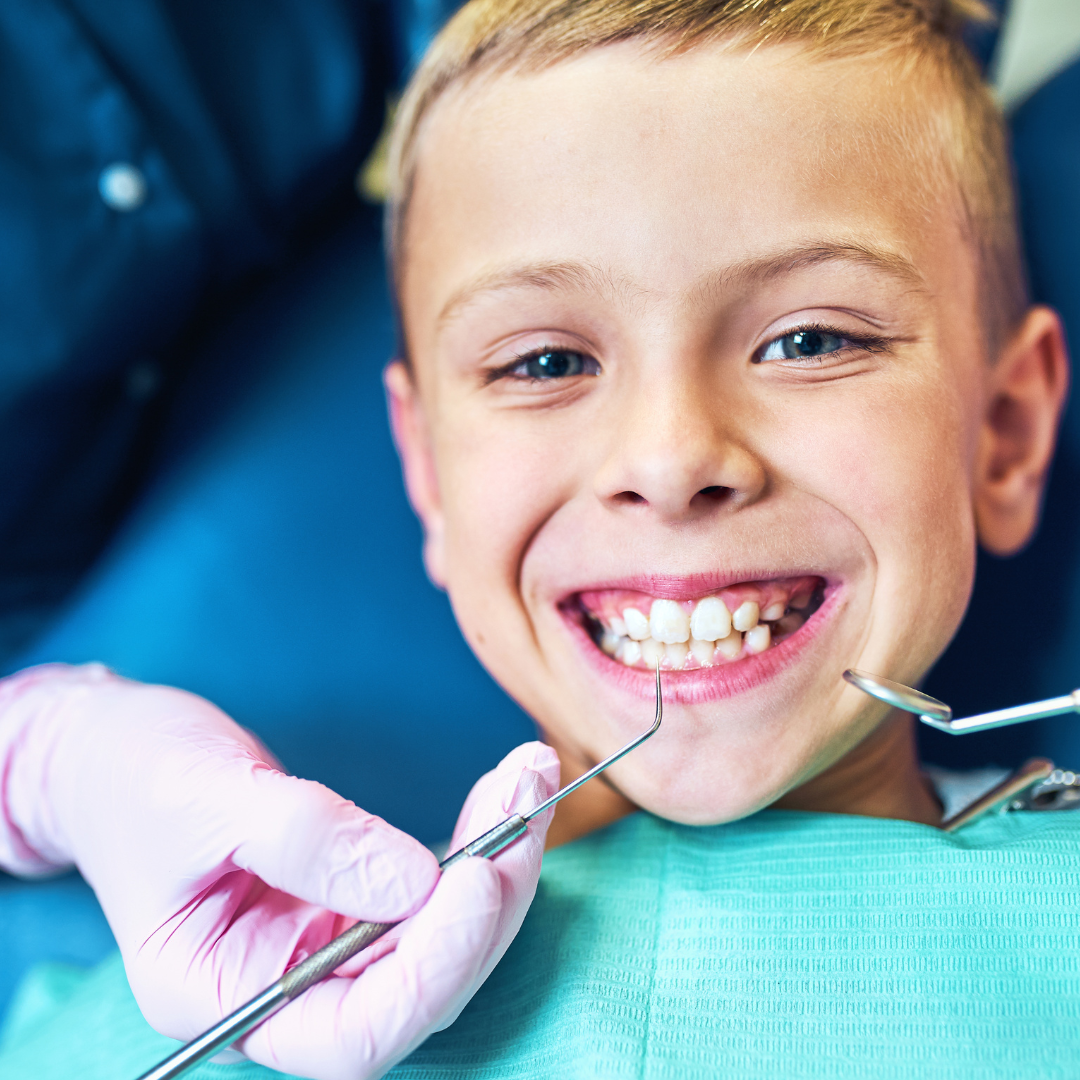
27 Mar Everything you need to know about enamel hypomineralisation
Written by Emily Smith — Oral Health Therapist.
If you have kids and they have been to the dentist, there is a good chance you have heard the term “hypomineralisation”. You may have also heard it referred to as chalky teeth. So, what is hypomineralisation exactly, and what does it refer to?
What is enamel hypomineralisation?
Hypomineralisation is an enamel defect that occurs at the time of tooth formation, which affects the quality of the tooth enamel. This can vary depending on the tooth which is affected.
It most commonly occurs on the 6-year-old molars and the permanent central incisors (front teeth), although it can be seen on any tooth, both baby and adult. It can present in a variety of ways and severities, and it usually appears as a creamy yellow/brown or extra white spot on the tooth that can’t be removed with brushing or cleaning. It may be a small spot or cover a large portion of the tooth.
In some cases, the teeth affected by hypomineralisation can be quite sensitive to cold (think sensitivity when eating ice cream or drinking cold water, or even just brushing your teeth with cold tap water).
Because the quality of the enamel is affected, the tooth is at a higher risk for developing tooth decay, especially if the defect is between the teeth or on the biting surfaces of molar teeth. In severe cases, the tooth can start to chip or break away, even as the tooth is erupting into the mouth.
Can hypomineralisation be treated?
Treatment will depend on the tooth that is affected, where the tooth is affected and how severe the hypomineralisation is.
In mild cases, there may be no treatment necessary besides being aware of it and keeping it clean with a toothbrush and toothpaste. Other times, fissure seals or fillings may be required to protect the surface of the tooth or restore an already decayed surface.
The problem with regular composite resin fillings and extensive hypomineralisation is that the filling doesn’t bond well to the tooth, so it is more likely to need replacing sooner. This creates a vicious cycle, where the filling continues to get bigger and less tooth structure remains. In these cases, a crown may be necessary for the long-term survival of these teeth.
In other cases, if the hypomineralisation is severe and minimal healthy tooth structure remains, the best option in the long term may be to extract the tooth.
If it is the 6-year-old molar affected, extraction would ideally occur when the roots of the tooth behind (12-year-old molar) are forming (usually around 9 or 10 years old). Extracting the affected tooth at this age willallow for the 12-year-old molar to move into its place.
This course of treatment is usually carried out in consultation with an orthodontist to achieve the best outcome. Intermediate treatment is often needed in these cases to get the tooth to this point with minimal discomfort to the patient.
If it is a front tooth that is affected and it is causing an unsightly mark on the tooth, bleaching, fillings, or veneers may be used to cover the area and create a better aesthetic.
Can babies get hypomineralisation?
Baby molars may also be affected by hypomineralisation. The aim here is to maintain that tooth in the mouth until its natural exfoliation. This may mean a fissure seal or in more severe cases, a stainless-steel crown.
The age of the child and the severity of the lesion will determine if it can be managed in a general dentist’s office by a dentist or oral health therapist or needs to be managed by a specialist paediatric dentist. The earlier the lesion is detected and managed, the better the long-term outcome is for these teeth.
At Boulton Dental, we recommend bringing your children in for a dental check-up at least every year from about one year old.
What to do when your child is diagnosed with hypomineralisation
If your child is diagnosed with molar hypomineralisation, there are a couple of things you can do at home to help relieve the symptoms and prevent decay from developing.
- Brush twice a day using an adult fluoride toothpaste (provided your child is able to spit the toothpaste out), and avoid rinsing the toothpaste off with water afterwards. You may even find it helpful to wet the brush with warm water before brushing, as this will help reduce sensitivity while brushing.
- Using sensitive toothpaste may also help reduce sensitivity experienced associated with these teeth.
- Apply GC Tooth Mousse Plus. This is a cream that is applied to the affected teeth on a regular basis which helps to strengthen them and increase their mineral content by a small amount, helping to prevent tooth decay from developing. It does not cure the condition, though.
- Avoid acidic foods and drinks as this will further increase the breakdown of the tooth structure.
Research into hypomineralisation & its causes
While we don’t know for certain the causes behind hypomineralisation, it is essentially a lack of mineral content in the tooth. The most common theory now is that there is a disruption to the development of the tooth at a very young age (or even in utero) by an illness of some sort, but it is still not understood if it is the illness itself or the medicines used to treat the illness that is the culprit.
Much research is going into molar hypomineralisation and its causes as well as how to prevent it. The D3 Group is a great supporter of this research, and all signs point to it being an extremely complex condition, with a lot more research needed to find all the answers.
What is important to remember is that this condition is not because of anything you or your child have done wrong. It can develop in any child, regardless of socioeconomic status, oral hygiene habits or diet.

Sorry, the comment form is closed at this time.